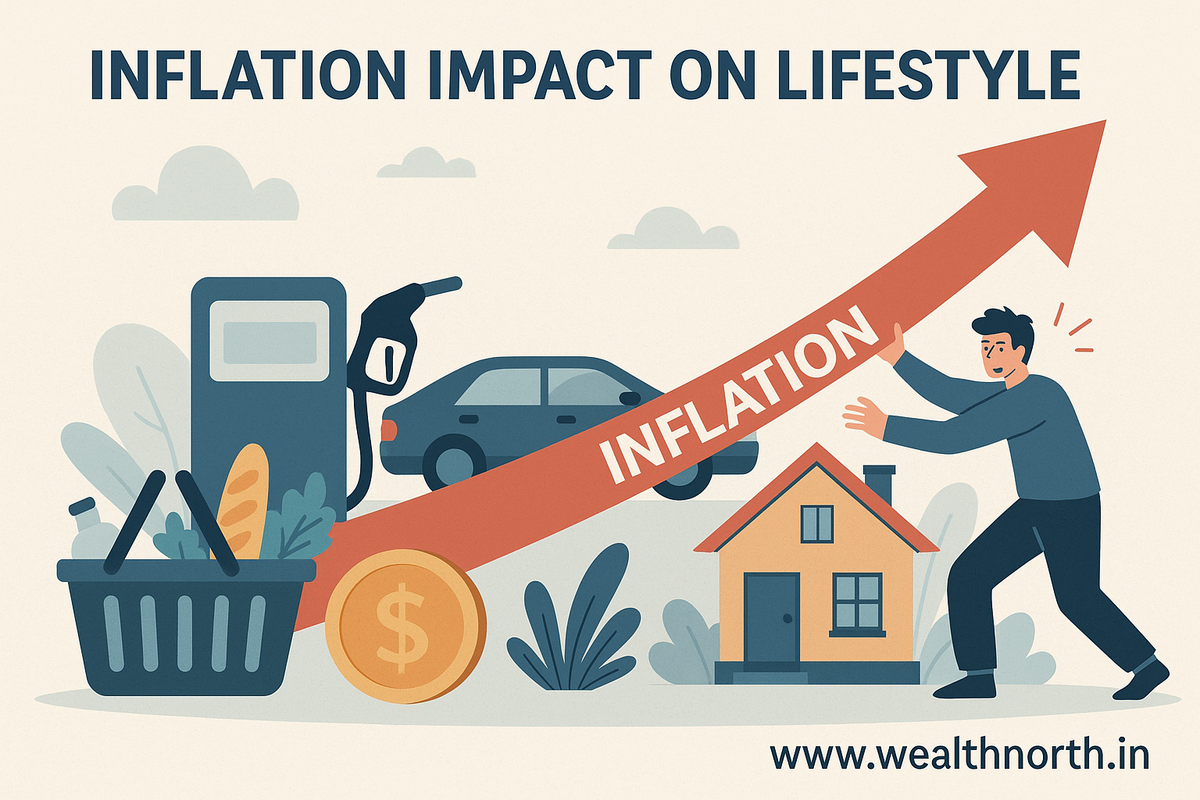Understanding Inflation in India – What It Is, How It’s Calculated, and Why It Matters

Inflation affects everything — from the price of your morning chai to the value of your long-term investments. Yet, many of us don’t fully understand how inflation works, how it’s measured in India, and what it truly means for our finances.
What Is Inflation?
Inflation is the rate at which the general level of prices for goods and services rises over time, reducing purchasing power. When inflation is high, every rupee buys you less than before.
In simple terms, if your cost of living increases by 6% this year, and your income or investments grow by only 4%, you’ve effectively lost money in real terms.
How Is Inflation Calculated in India?
In India, inflation is calculated using two major indices:
- Consumer Price Index (CPI): Measures retail inflation based on a basket of goods and services consumed by households.
- Wholesale Price Index (WPI): Measures price changes at the wholesale level (before reaching consumers).
What Are the Different Inflation Indexes?
- CPI-Combined (CPI-C): Tracks retail inflation for urban + rural households. Most widely used.
- CPI-Urban / CPI-Rural: Breakdowns of CPI across geographies.
- CPI for Industrial Workers (CPI-IW): Used for wage calculations and dearness allowance (DA).
- WPI: Tracks price changes in fuel, food, raw materials — published by the Ministry of Commerce.
Who Publishes Inflation Data in India?
- MoSPI (Ministry of Statistics and Programme Implementation): Publishes CPI monthly.
- Office of the Economic Adviser (Ministry of Commerce): Publishes WPI data.
- RBI (Reserve Bank of India): Uses CPI data to set monetary policy.
Frequency: Inflation data is published monthly — typically between the 12th to 15th of each month.
How Inflation Affects Your Investments and Lifestyle
- Reduces real return: A 7% FD return in 6% inflation = only 1% real return.
- Erodes savings: Idle cash loses value every year.
- Affects bond & equity markets: High inflation = higher interest rates = lower market valuations.
- Raises cost of living: Daily essentials, rent, travel, and healthcare all become costlier.
Even long-term financial goals like retirement and education must factor in inflation. Otherwise, you may fall short when the time comes.
Flaws in the Current Inflation Calculation
- Outdated weightages: The CPI basket is rarely updated. Modern expenses like streaming services, smartphones, or private education are underrepresented.
- Urban vs rural disparity: One combined CPI number doesn’t reflect how inflation hits different demographics.
- Doesn’t capture lifestyle inflation: CPI tracks basic needs — not aspirations or aspirational spending.
- Static consumption basket: Fails to adapt to shifts in consumer behavior (e.g., online services, tech upgrades).
How to Beat Inflation
- Invest smartly: Use mutual funds, index funds, and equities that grow faster than inflation.
- Use SIPs: Regular investing helps smooth volatility and build wealth over time.
- Track real return: Always subtract inflation from your returns to know your “true” growth.
- Rebalance annually: Update your allocation based on inflation trends and financial goals.
Final Thoughts
Inflation may not make headlines every day — but it quietly reduces your purchasing power month after month.
"Inflation is taxation without legislation." — Milton Friedman
By understanding how inflation works and how it's measured, you’ll be able to make smarter investment choices and protect your future lifestyle.
Related Reads
- What is Real Rate of Return?
- Inflation Imapct Calculator
- Reverse Inflation Calculator
- How SIP Works
- Understanding Mutual Fund Risk
- Mutual Fund investments are subject to market risks.
- Please read all scheme-related documents carefully before investing.
- Past performance is not indicative of future returns.
- Investors are advised to consult their financial advisor before making any investment decisions.
- This blog is for informational purposes only and does not constitute an offer or solicitation to invest in any financial product.
- Wealth North does not guarantee returns or assume responsibility for investment outcomes.
